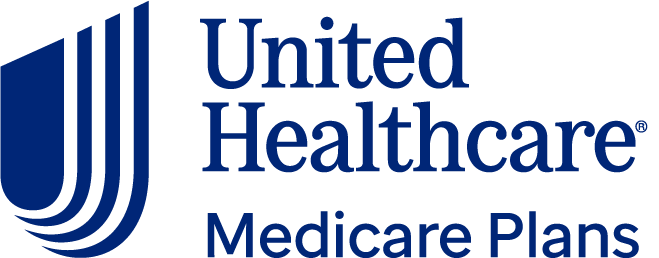The bottom line: Anthem's standard benefits are strong and some plans offer a menu of extra perks, but its star ratings are below average, and plans are available in only 13 states. Jump to: Full Review

Anthem Medicare Advantage pros and cons
Pros
- Standard benefits: Most Anthem plans cover prescription drugs and include some coverage for dental, vision and hearing services. Some plans may include a flex card to cover certain expenses.
- Flexibility for additional benefits: Some Anthem plans offer a choice from a menu of extra services at no extra cost. Example offerings include transportation or allowances to cover costs for assistive devices or dental, hearing and vision services.
Cons
- Available in few states: Anthem offers Medicare Advantage plans in only 13 states.
- Below-average ratings: Anthem plans' average star rating from CMS, weighted by enrollment, is 3.64 stars, which is below the average for all providers.
- Anthem has the highest maximum out-of-pocket costs, on average, among large Medicare Advantage companies.
Compare against other providers

🔍 UnitedHealthcare Medicare Advantage



» More options in our roundup of the best Medicare Advantage plans
Compare against other providers

🔍 UnitedHealthcare Medicare Advantage

» More options in our roundup of the best Medicare Advantage plans
Our full review
Why trust NerdWallet
45+ Medicare companies and brands analyzed by our team of experts.
30+ years of combined experience covering Medicare and personal finance.
Governed by NerdWallet's strict guidelines for editorial integrity.
NerdWallet’s Medicare content, including articles, reviews and recommendations, is produced by a team of writers and editors who specialize in Medicare. Their work has appeared in The Associated Press, Washington Post, Nasdaq, MSN, MarketWatch, Yahoo! Finance and other national and regional media outlets. They have been cited in publications including Healthline, and appeared on NerdWallet's "Smart Money" podcast.
Anthem Medicare Advantage star rating
Average star rating, weighted by enrollment: 3.64
Anthem Medicare Advantage plans are rated below the industry average, receiving an average rating of 3.64 stars out of 5 from the Centers for Medicare & Medicaid Services (CMS) for 2026, weighted by enrollment. For comparison, the average weighted star rating for plans from all providers is 3.98.
Of Anthem members in plans with a Medicare star rating, 45% are in plans rated 4 stars or better for the 2026 plan year.
CMS maintains star ratings for Medicare Advantage and Medicare Part D plans on a 5-point scale, ranking plans from best (5 stars) to worst (1 star). The agency bases these ratings on plans’ quality of care and measurements of customer satisfaction, and ratings may change from year to year.
You can find a plan’s rating with the Medicare plan-finding tool.
How much does Anthem Medicare Advantage cost?
About one third (32%) of Anthem Medicare Advantage plans have $0 premiums. For Medicare Advantage prescription drug plans with a premium, Anthem’s average monthly cost is $47.14. You'll also still be responsible for paying your Medicare Part B premium, which is $185 per month in 2025 ($202.90 in 2026).
(Most people pay this standard Part B amount, but if your income is above a certain threshold, you'll pay the income-related monthly adjustment amount (IRMAA). Some Medicare Advantage plans cover part or all of your Part B premium.)
Requirements for copays, coinsurance and deductibles vary depending on your plan, location and the services you use. Other out-of-pocket costs to consider include:
Whether the plan covers any part of your monthly Medicare Part B premium.
The plan’s yearly deductibles and other deductibles, such as a drug deductible.
Copayments and/or coinsurance for each visit or service. For instance, there may be a $10 copay for seeing your primary doctor and a $45 copay for seeing a specialist.
The plan’s in-network and out-of-network out-of-pocket maximums.
Whether your medical providers are in-network or out-of-network or how often you may go out-of-network for care.
Whether you require extra benefits and whether the plan charges for them.
Here are examples of Anthem Medicare Advantage costs for three plans in a mid-range city:
Anthem Medicare Advantage plan | Pricing |
|---|---|
Anthem Medicare Advantage 3 (HMO-POS) | Monthly premium: $0. Deductible: None. Out-of-pocket max: $4,250 in-network. Copays:
Dental allowance: $2,500. |
Anthem Medicare Advantage 4 (HMO-POS) | Monthly premium: $0. Deductible: None. Out-of-pocket max: $5,900 in-network. Copays:
Dental allowance: $2,000. |
Anthem Medicare Advantage (PPO) | Monthly premium: $14. Deductible: $0 in-network. Out-of-pocket max: $8,950 in-network. Copays:
Dental allowance: $1,000. |
Selected plans are available in ZIP code 23173. *Inpatient hospital copay is per day for days 1-5. **Inpatient hospital copay is per day for days 1-6. | |
| |
To get a sense of costs, use Medicare’s plan-finding tool to compare information among available plans in your area. You can select by insurance carrier to see only Anthem plans or compare across carriers.
Anthem Medicare Advantage plan types
Anthem offers Medicare Advantage prescription drug plans and Medicare Advantage plans without drug coverage.
Plan offerings include the following types:
- HMO plans
A health maintenance organization (HMO) generally requires that you use a specific network of doctors and hospitals. You may need a referral from your primary doctor in order to see a specialist, and out-of-network benefits are usually very limited.
- HMO-POS plans
HMO point-of-service (POS) plans are HMO plans that allow members to get some out-of-network services, but you’ll pay more for those services.
- PPO plans
Preferred provider organization (PPO) plans provide the most freedom, allowing you to see any provider that accepts the insurance. You may not need to choose a primary doctor, and you don’t need referrals to see specialists. You can seek out-of-network care, although it may cost more than seeing an in-network doctor.
- SNPs
Special needs plans (SNPs) restrict membership to people with certain diseases or characteristics. Hence, the benefits, network and drug formularies are tailored to the needs of those members. Anthem offers three types of SNPs:
Chronic Condition SNP: Designed to meet the needs of members with certain chronic conditions, such as diabetes, congestive heart failure and cardiovascular disease.
Dual-Eligible SNP: For people who are entitled to Medicare and who also qualify for assistance from a state Medicaid program.
Institutional SNP: For people living in an Anthem network nursing home or assisted living community or another plan-approved spot.
Third-party ratings of Anthem
AM Best Financial Strength Rating: A (Excellent)
AM Best is a credit rating agency that specializes in the insurance industry. In December 2024, AM Best affirmed its Financial Strength Rating of A for the core Blue Cross Blue Shield-branded insurance subsidiaries of parent company Elevance Health, collectively referred to as Anthem Health. An A rating in this category indicates that AM Best believes the company has an excellent ability to meet its ongoing insurance obligations.
J.D. Power Ranking
J.D. Power releases an annual study measuring member satisfaction with Medicare Advantage plans. It uses eight factors, such as level of trust, ability to get health services, ease of doing business and resolving problems or complaints.
Here’s how Anthem ranked among major providers in the Medicare markets where it has enough market share to appear on the survey:
California: 8th out of 8.
Georgia: 2nd out of 5.
Ohio: 1st out of 4.
Anthem Medicare Advantage service area
Anthem offers Medicare Advantage plans in 13 states.
Anthem's parent company, Elevance Health, is the fourth-largest for-profit Medicare Advantage provider. Elevance plans cover more than 2.2 million Medicare Advantage beneficiaries, and the company added 274,000 members for the 2025 plan year.
About Anthem
Anthem's parent company, Elevance Health, is headquartered in Indianapolis. It was formed in 2004 out of a merger between WellPoint Health Networks and Anthem. In 2022, the company changed its name to Elevance Health, but it continues to sell Medicare products under the Anthem brand.
Elevance Health offers commercial health insurance for individuals and employers. Its Medicare products include Medicare Advantage and Medicare Supplement Insurance, but it recently stopped selling Medicare Part D plans. It also offers other products such as life, disability, dental and vision insurance.
» MORE: Read our review of Anthem Medicare Supplement Insurance
Anthem Medicare Advantage customer service
Here’s how Anthem members can contact customer service:
Call a state-specific phone number. Log in or select your state on Anthem’s Contact Us page to find the number and hours.
Chat on anthem.com or in Anthem’s Sydney Health app for Android or iOS.
Email help@anthem.com.
Compare Medicare Advantage companies
Get more information below about some of the major Medicare Advantage providers. These insurers offer plans in most states. The plans you can choose from will depend on your ZIP code and county.
Find the right Medicare Advantage plan
It’s important to do your research before selecting a Medicare Advantage plan for yourself. Here are some questions to consider asking:
What are the plan’s costs? Do you understand what the plan’s premium, deductibles, copays and/or coinsurance will be? Can you afford them?
Is your doctor in-network? If you have a preferred medical provider or providers, make sure they participate in the plan’s network.
Are your prescriptions covered? If you’re on medication, it’s crucial to understand how the plan covers it. What tier are your prescription drugs on, and are there any coverage rules that apply to them?
Is there dental coverage? Does the plan offer routine coverage for vision, dental and hearing needs?
Are there extras? Does the plan offer any extra benefits, such as fitness memberships, transportation benefits or meal delivery?
If you have additional questions about Medicare, visit Medicare.gov or call 800-MEDICARE (800-633-4227, TTY 877-486-2048).

- Most plans cover prescription drugs and offer some coverage for dental, hearing and vision care.
- Anthem's "Essential Extras" benefits let members choose extra plan benefits that meet their needs.
- Available in only 13 states.
- Below-average overall star ratings from CMS.
- Higher average maximum out-of-pocket costs on plans.
Article sources
NerdWallet writers are subject matter authorities who use primary, trustworthy sources to inform their work, including peer-reviewed studies, government websites, academic research and interviews with industry experts. All content is fact-checked for accuracy, timeliness and relevance. You can learn more about NerdWallet's high standards for journalism by reading our editorial guidelines.
- 1.Centers for Medicare & Medicaid Services. 2026 Star Ratings Data Tables. Accessed Oct 16, 2025.
- 2.Centers for Medicare & Medicaid Services. CY 2026 Landscape (202509). Accessed Oct 16, 2025.
- 3.Centers for Medicare & Medicaid Services. Understanding Medicare Advantage Plans. Accessed Oct 16, 2025.
- 4.AM Best. AM Best Affirms Credit Ratings of Elevance Health, Inc. and Its Subsidiaries. Accessed Oct 16, 2025.
- 5.J.D. Power. Medicare Advantage Plan Member Satisfaction Facing Headwinds; Digital Innovation an Emerging New Solution, J.D. Power Finds. Accessed Oct 16, 2025.
- 6.Chartis. Medicare Advantage market growth slows amid intensified headwinds. Accessed Oct 16, 2025.
Medicare Advantage review methodology
The Medicare Advantage marketplace is concentrated among just a handful of companies. In many places, one insurer serves more than half of the market. NerdWallet’s editorial team reviewed 25 Medicare Advantage brands, with some insurers having more than one brand under their umbrella. (For example, Blue Cross Blue Shield includes the brands Anthem and Highmark.) At the national level, these reviews include each of the 10 largest brands by enrollment. At the state level, our research includes at least one major insurer in every state where Medicare Advantage plans are sold, and includes the top two insurers in 40 of those 49 states. (Alaska doesn't offer Medicare Advantage plans.) We also look at online search volume to identify regional and other notable players in the space.
NerdWallet’s Medicare Advantage reviews are based on ratings data from the Centers for Medicare & Medicaid Services, as well as pricing, plan availability by state, plan types available, consumer experience, extra benefits offered and more. These reviews are a guide, but we encourage you to shop around and compare several plans to find the best coverage and rate for you. NerdWallet does not receive compensation for any reviews. Read our editorial guidelines for additional information.
Compare Medicare Advantage plans
Insurance company | CMS star rating | States available | Members in high-rated plans | Member experience | Learn more | |
|---|---|---|---|---|---|---|
4.10 | 4.10/5 | 48 states and Washington, D.C. | Medium (50% to 84%) | 3.76 (Above average) | (855) 821-0556 / TTY 711 Call UnitedHealthcarefrom UnitedHealthcare | |
 (855) 432-0512 / TTY 711 M-F 9AM-9PM, Sat 10AM-6PM ETSpeak to a licensed insurance agent on askchapter.orgon NerdWallet | 3.61 | 3.61/5 | 46 states and Washington, D.C. | Low (49% or less) | 3.61 (Above average) | (855) 432-0512 / TTY 711 M-F 9AM-9PM, Sat 10AM-6PM ETSpeak to a licensed insurance agent on askchapter.orgon NerdWallet |
 (855) 432-0512 / TTY 711 M-F 9AM-9PM, Sat 10AM-6PM ETSpeak to a licensed insurance agent on http://askchapter.org on NerdWallet | 4.19 | 4.19/5 | 43 states and Washington, D.C. | Medium (50% to 84%) | 3.88 (Above average) | (855) 432-0512 / TTY 711 M-F 9AM-9PM, Sat 10AM-6PM ETSpeak to a licensed insurance agent on http://askchapter.org on NerdWallet |
 (855) 432-0512 / TTY 711 M-F 9AM-9PM, Sat 10AM-6PM ETSpeak to a licensed insurance agent on askchapter.orgon NerdWallet | 3.68 | 3.68/5 | 29 states and Washington, D.C. | Medium (50% to 84%) | 3.89 (Above average) | (855) 432-0512 / TTY 711 M-F 9AM-9PM, Sat 10AM-6PM ETSpeak to a licensed insurance agent on askchapter.orgon NerdWallet |
